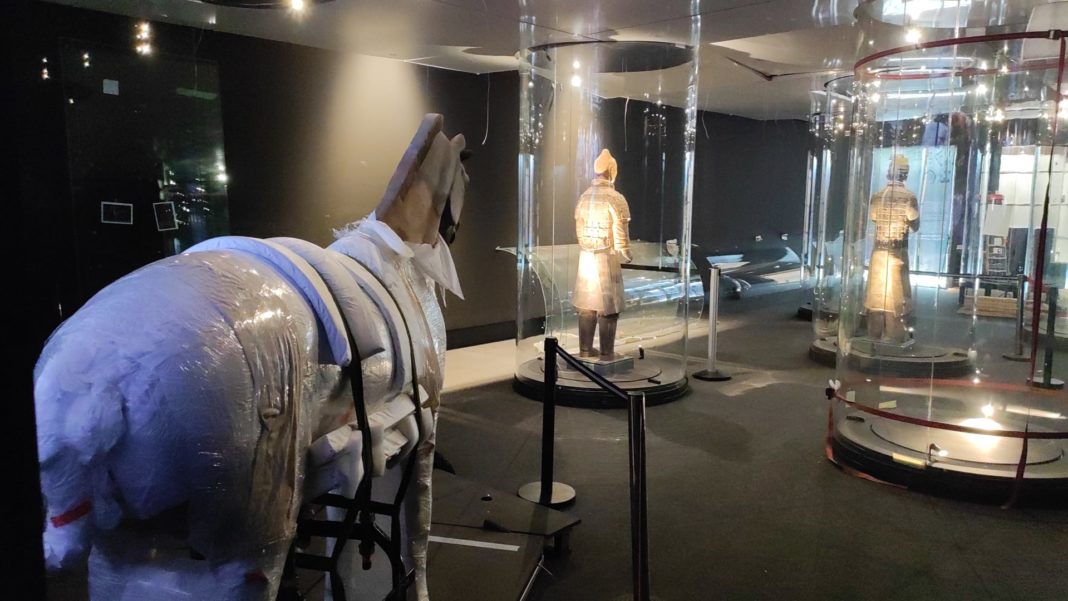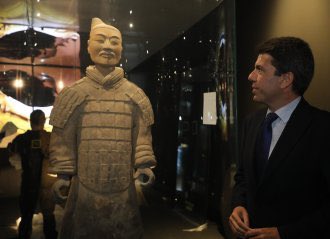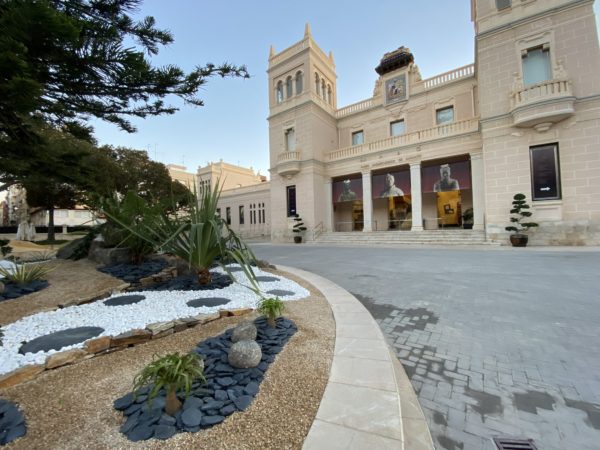With more than 120 pieces from 9 museums MARQ brings to Spain the famous Chinese terracotta figures in a “unique” exhibition.
Centuries before King Qin became the first emperor of China, in the year 221 BC, the belief in an afterlife was already widespread across the country. That meant, for the wealthiest, taking to the grave everything they needed to guarantee their survival. From food to cooking equipment while animals, slaves and concubines were sacrificed and buried next to their master.
When Qin came to power, the belief did not decline, but it did introduce a subtle change, which was to substitute ceramic images for elements of reality. So we can now understand what the Terracotta Warriors are and why they were created.
Professor Marcos Martinón-Torres, from Cambridge University, explained the history of the warriors to the president of the Provincial Council, Carlos Mazón, when he had a preview of the exhibition ‘The legacy of the Qin and Han dynasties. The warriors of Xian,’ which opened its doors on Tuesday at the MARQ, Alicante’s Archaeological Museum.
The exhibits are a “unique” sample, of more than 120 pieces from 9 Chinese museums, “which is presented for the first time in the world ” and which “has never been seen as it is in Alicante”.
And not only because of the seven original warriors and one horse that are on display or because it is the first time in almost a decade that they have been seen in Spain, or because it is the first time that these soldiers have left Xian since 2018 .
The famous warriors of Xian, of which 1,500 of the 8,000 estimated to exist, have been excavated, which involved removing earth equivalent to 5,000 truckloads, are nothing more than an “accessory” element found at the entrance of the Qin emperor’s mausoleum, built on an area of 100 square kilometres.
“It is an authentic city that was built to live in the afterlife, with palaces, canals, a pyramid with the tomb of the emperor 60 metres high, which is still unexcavated, and at the entrance the terracotta army to defend him”.
Tickets and guided tours
Tickets for the exhibition – open until January 2024 – can be purchased on the web, https://marqalicante.com/, and are priced at 5 euros or 8 euros for a guided visit. Guided tours, for 25 people, are every half hour, between 10 am and 6 pm. The MARQ opens from Tuesday to Saturday from 10 a.m. to 7 p.m. and Sundays and holidays, from 10 a.m. to 2 p.m. From June 15, it will be open from 10 a.m. to 10 p.m.








